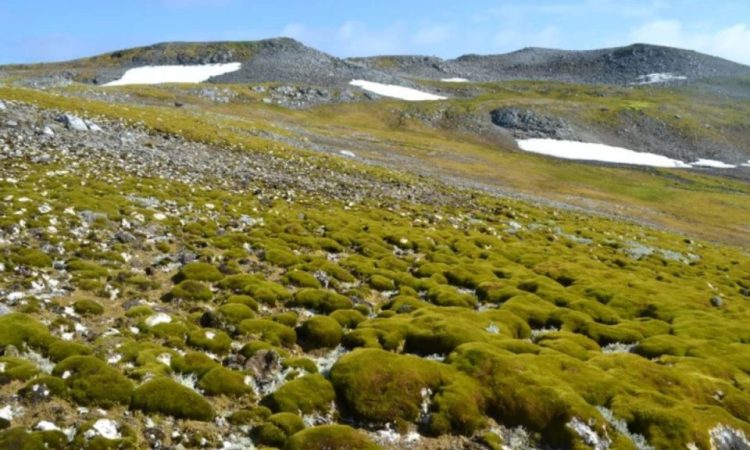
In a place where temperatures are soaring, vegetation is spreading at an alarming rate.
A region of Antarctica is warming and turning green at a shocking rate. Satellite images of the region reveal that the area covered by plants has increased nearly 14 times in 35 years. This is a trend that will stimulate rapid change in Antarctic ecosystems. “It’s the beginning of a radical transformation,” said Olly Bartlett, a remote sensing specialist at the University of Hertfordshire and author of the study published in Nature.
From white to green
Bartlett and his colleagues analyzed images taken between 1986 and 2021 of the Antarctic Peninsula. It is a part of Antarctica that juts out towards the tip of South America. The images were taken by Landsat satellites operated by NASA and the US Geological Survey in March, which coincides with the end of the vegetation growing season in Antarctica. To evaluate how much of the territory was covered with vegetation, researchers have exploited the properties of plants. These, in fact, absorb a lot of red light and reflect a lot of near-infrared light. Scientists can use satellite measurements of light at these wavelengths to determine whether a patch of land is covered by vegetation.
The team found that the area of the peninsula covered by moss has grown from less than one square kilometer in 1986 to almost 12 square kilometers in 2021
Advertisement
. The rate of expansion was about 33% higher between 2016 and 2021 than over the four-decade study period as a whole.
“Shocking numbers” about Antarctica
“These numbers shocked us,” explained Thomas Roland, co-author of the study and a scientist at the University of Exeter in the United Kingdom. The research is “really important,” added Jasmine Lee, a scientist at the British Antarctic Survey in Cambridge. Other studies have found evidence that vegetation on the peninsula is changing in response, “but this is the first study that has taken a broader approach to look at the entire region.”
Previous visits to the peninsula had led the authors to believe that most of the vegetation was moss. “When mosses spread across previously ice-covered landscapes, they create a layer of soil, providing a habitat for other plant life, and there is the potential to see an increase in non-native, potentially invasive species,” the scientists conclude. .
For further information:

